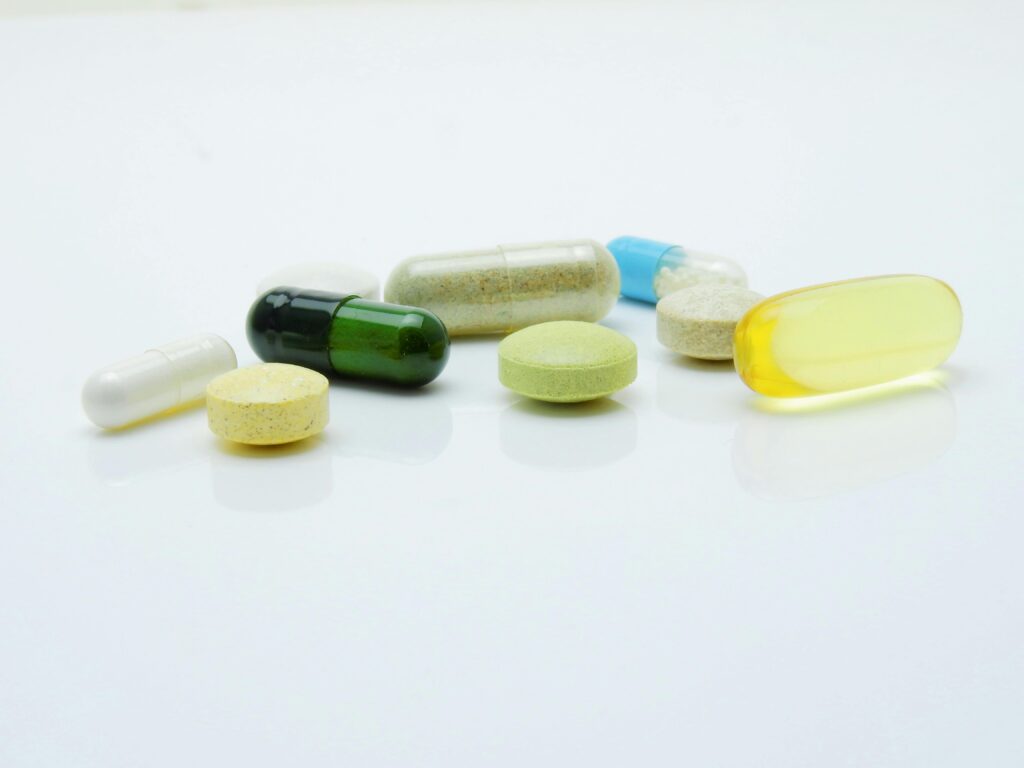Methadone is a vital tool in the fight against opioid use disorder (OUD). As one of the most widely prescribed medications for long-term recovery, methadone helps reduce cravings, suppress withdrawal symptoms, and block the euphoric effects of opioids like heroin and fentanyl. It allows people to stabilize, regain control, and rebuild their lives. But methadone isn’t without risks—especially when it comes to drug interactions. Because methadone is metabolized in the liver, affects the central nervous system (CNS), and stays in the body for many hours, it has the potential to interact with a wide range of medications and substances. Some of these interactions are mild, but others can lead to serious consequences, including overdose, sedation, cardiac complications, or withdrawal symptoms. Whether you’re starting methadone treatment, supporting a loved one, or managing multiple prescriptions, understanding these interactions is essential for safety and success. In this comprehensive guide, we’ll walk you through the most important drug interactions with methadone, explain why they matter, and provide clear guidelines on what to avoid—and how to stay safe.
How Methadone Works in the Body
Methadone is a full opioid agonist that binds to the brain’s mu-opioid receptors. It has a long half-life—usually between 24 and 36 hours—allowing for once-daily dosing in most patients. Its steady effects help prevent withdrawal, reduce opioid cravings, and support brain stabilization. Methadone is metabolized primarily by liver enzymes, especially cytochrome P450 (CYP) enzymes like CYP3A4, CYP2B6, and CYP2D6. Any drug that affects these enzymes can alter methadone levels—either increasing them (leading to overdose) or decreasing them (leading to withdrawal). Methadone also has a depressant effect on the central nervous system. When combined with other CNS depressants, its sedative properties can be amplified, putting users at risk of respiratory depression and overdose. For these reasons, methadone must be used with extreme care when other medications or substances are in the picture.
Types of Drug Interactions with Methadone
There are three main ways other drugs can interact with methadone:
-
Pharmacodynamic interactions—when two drugs affect the same system, such as the CNS, increasing sedation or slowing breathing.
-
Pharmacokinetic interactions—when one drug changes the metabolism, absorption, or elimination of another drug, altering its effects.
-
QT prolongation risk—when both drugs affect heart rhythm, potentially causing arrhythmias.
Understanding these categories can help you evaluate which drugs pose the greatest risk when combined with methadone.
1. Central Nervous System Depressants
CNS depressants are the most dangerous class of substances to mix with methadone. They can magnify sedation, impair coordination, and suppress breathing. Common CNS depressants include:
Benzodiazepines (e.g., Xanax, Valium, Klonopin, Ativan)
These medications are prescribed for anxiety, panic disorders, and sleep issues. When combined with methadone, they can lead to:
-
Profound sedation
-
Respiratory depression
-
Coma or death
Even small doses of benzodiazepines can be dangerous when taken with methadone. Patients should never use these drugs without direct supervision and ongoing monitoring by a healthcare provider.
Alcohol
Alcohol is another CNS depressant that significantly increases overdose risk when taken with methadone. It slows breathing, lowers inhibitions, and impairs judgment. Combining the two can result in:
-
Blackouts
-
Slowed or stopped breathing
-
Accidental overdose
-
Heart arrhythmias
Most methadone programs recommend complete abstinence from alcohol due to the risk it poses, even in small amounts.
Sedative-Hypnotics (e.g., Ambien, Lunesta, barbiturates)
Drugs used to treat insomnia or seizures can also enhance methadone’s sedative effects. The combination can cause:
-
Memory lapses
-
Hallucinations
-
Excessive drowsiness
-
Increased fall risk in elderly patients
Muscle Relaxants (e.g., Soma, Flexeril)
These drugs are sometimes prescribed for chronic pain or injury recovery but should be used cautiously or avoided during methadone treatment due to overlapping effects.
2. CYP Enzyme Interactions (Metabolism Disruptors)
Methadone’s metabolism depends heavily on the liver’s cytochrome P450 enzyme system. Drugs that induce or inhibit these enzymes can affect methadone levels and lead to side effects.
Drugs That Inhibit Methadone Metabolism (Risk of Overdose)
These drugs slow down methadone metabolism, leading to higher levels in the blood:
-
Fluconazole (Diflucan): An antifungal that can increase methadone’s sedative effects.
-
Ciprofloxacin (Cipro): An antibiotic known to elevate methadone levels.
-
Erythromycin: An older antibiotic that affects CYP3A4 activity.
-
Fluvoxamine (Luvox): An antidepressant that can inhibit CYP1A2 and CYP2D6, elevating methadone concentrations.
-
Protease inhibitors (e.g., ritonavir): Used in HIV treatment, these can raise methadone levels dangerously.
Drugs That Induce Methadone Metabolism (Risk of Withdrawal)
These drugs speed up methadone metabolism, potentially lowering its effectiveness:
-
Carbamazepine (Tegretol): Used for seizures and mood disorders, this drug can cause sudden withdrawal symptoms.
-
Phenytoin (Dilantin): An anticonvulsant that accelerates methadone breakdown.
-
Rifampin (Rifadin): An antibiotic used for tuberculosis; may drastically lower methadone levels.
-
St. John’s Wort: A common herbal supplement for depression that affects CYP3A4 and can reduce methadone efficacy.
Patients taking these medications may require dose adjustments, closer monitoring, or alternative treatments.
3. QT Prolonging Drugs
Methadone itself has the potential to prolong the QT interval—a measurement of the heart’s electrical cycle. Prolongation increases the risk of torsades de pointes, a potentially fatal arrhythmia. Combining methadone with other QT-prolonging drugs increases this risk. Examples include:
-
Haloperidol (Haldol): An antipsychotic
-
Quetiapine (Seroquel): Often used for mood disorders or sleep
-
Citalopram (Celexa): An SSRI antidepressant
-
Amiodarone: A heart rhythm medication
-
Azithromycin (Zithromax): An antibiotic commonly prescribed for infections
If you’re on methadone and prescribed any QT-prolonging drug, your provider may order an EKG (electrocardiogram) to monitor your heart rhythm regularly.
4. Opioids and Opioid-Like Medications
Methadone should never be combined with other opioids unless under extreme medical supervision. Combining methadone with:
-
Fentanyl
-
Hydrocodone (Norco, Vicodin)
-
Oxycodone (OxyContin, Percocet)
-
Tramadol
can lead to rapid overdose. Even though methadone blocks many of the euphoric effects of other opioids, high doses can still overwhelm the respiratory system, leading to death. Similarly, kratom, a plant-based opioid agonist, should be avoided due to its unpredictable effects and risk of interaction.
5. Antidepressants and Antipsychotics
While many people on methadone also receive treatment for depression or anxiety, certain mental health medications require close oversight.
SSRIs and SNRIs
Most SSRIs (e.g., sertraline, escitalopram) are considered safe with methadone. However, fluoxetine (Prozac) and fluvoxamine may increase methadone levels and sedation.
MAOIs
Monoamine oxidase inhibitors are older antidepressants that can interact unpredictably with methadone and should generally be avoided.
Atypical Antipsychotics
Medications like risperidone, olanzapine, or aripiprazole can cause sedation, and some may also prolong the QT interval. If prescribed, discuss risks with your provider.
6. Anticonvulsants and Mood Stabilizers
Certain seizure medications and mood stabilizers can dramatically reduce methadone levels, increasing the risk of withdrawal symptoms:
-
Phenobarbital
-
Carbamazepine
-
Valproic acid (Depakote)
Regular monitoring and dose adjustments may be needed if you take these medications alongside methadone.
7. Over-the-Counter Medications and Supplements
Even non-prescription drugs and supplements can affect methadone metabolism. Common culprits include:
-
Diphenhydramine (Benadryl): Often used as a sleep aid or for allergies, it increases sedation.
-
Dextromethorphan (in cough syrups): May interact with methadone and increase CNS effects.
-
Ibuprofen or acetaminophen: Generally safe, but high doses can affect liver health over time.
-
St. John’s Wort: Speeds up methadone metabolism and reduces its effectiveness.
-
Grapefruit juice: Inhibits CYP3A4 and may elevate methadone levels.
Always disclose everything you take, including vitamins and herbal products, to your provider.
Tips for Managing Drug Interactions with Methadone
1. Disclose All Medications
Tell your provider or clinic staff about every prescription, over-the-counter drug, supplement, or herb you use. Transparency is essential for your safety.
2. Ask Before Starting Anything New
Before starting a new medication—even if it seems harmless—ask your provider or pharmacist about interactions with methadone.
3. Stay Consistent
Changing your methadone dose, missing doses, or switching medications without guidance can destabilize your treatment and increase interaction risks.
4. Get Regular Checkups
Routine liver function tests, EKGs, and medication reviews are important when on long-term methadone therapy.
5. Watch for Symptoms
Signs that something may be wrong include:
-
Sudden drowsiness
-
Irregular heartbeat
-
Nausea or vomiting
-
Anxiety or withdrawal symptoms
-
Difficulty breathing
Report any unusual symptoms immediately.
Actionable Takeaways
-
Methadone can interact with many drugs through shared CNS effects, liver metabolism, and cardiac risks.
-
Avoid mixing methadone with alcohol, benzos, or sedatives—this is the most dangerous combination.
-
Certain antibiotics, antidepressants, anticonvulsants, and antifungals can raise or lower methadone levels dangerously.
-
QT-prolonging drugs increase the risk of heart arrhythmias when combined with methadone.
-
Over-the-counter medications and supplements are not always safe—always ask your provider.
-
Disclose everything you take, even if it seems minor, and never self-medicate while on methadone.
-
Stick to your prescribed dose and schedule, and attend regular follow-ups with your treatment team.
Conclusion
Methadone has transformed the lives of millions battling opioid addiction. It offers stability, safety, and a structured path toward long-term recovery. But its power also demands respect. When combined with the wrong medications—or misused without supervision—methadone can become dangerous. That’s why education, communication, and proactive care are essential. By knowing what drugs to avoid and how methadone interacts with other substances, you can protect your health, avoid setbacks, and build a safer, stronger foundation for recovery. Whether you’re starting methadone or years into treatment, you deserve to be informed, supported, and safe. Your recovery is worth it—and so are you.
Renew Health: Your Partner in Safe Methadone-Based Recovery
Phone: 575‑363‑HELP (4357)
Website: www.renewhealth.com


